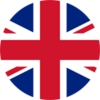Currently, Pangasius (Pangasianodon hypophthalmus) is one of the main freshwater cultured fish species, due to provide domestic food and is an important seafood export item not only in Vietnam but also in some tropical countries including Thailand, Cambodia, Myanmar, Indonesia, Malaysia, Bangladesh, India, and the Philippines. However, due to the rapid transition from extensive farming to intensive farming, the farming area is expanding, so the problem of environmental pollution and disease occurs more and more.
In the Mekong Delta- Vietnam, Hemorrhagic disease (also known as red spot disease) is one of the common diseases in Pangasius with the highest frequency in intensively cultured pangasius and has caused great losses to farmers. A causative agent is a group of bacteria called Aeromonas spp. including Aeromonas hydrophila, A. sobria and A. caviae. In which, Aeromomas hydrophila is considered as the most important species causing disease for freshwater fish. by Aeromonas hydrophila which was first recorded in the US in salmon (freshwater) in 1979, then the disease appeared in some Asian countries. In Vietnam, the disease was recorded before 1993. Currently, the disease outbreaks in almost all freshwater fish farming areas and cause great economic losses to farmers.
The hemorrhagic disease occurs in most species of pangasius cultured in cages, freshwater ponds and at all stages of culture, the disease spreads quickly with mortality up to 90% in severe cases. In Vietnam, hemorrhagic disease occurs all year round, concentrating at the beginning of the dry season, especially when fish are stressed like after it rains. The disease spreads from diseased fish to healthy fish in the same pond. Pathogens exist in the environment and can directly cause disease to healthy fish through infection by tools (such as brass, racket, net, ..). Pathogens can exist in the pond water environment and spread from one pond to another, from one culture area to another.
1.Causes:
High stocking densities, environmental pollutants and organic mud in ponds. Hemorrhagic disease is more likely to occur when the fish are stressed, for example during handling or transportation. Fish are shocked by transport, ponds have high levels of nitrite and ammonia, and low dissolved oxygen. The disease can appear in all stages of the development of cultured pangasius.
2. Causative agent: Aeromonas hydrophila species of bacteria specific to freshwater. In addition, in some cases, A. Sobria bacteria were isolated on diseased fish. Aeromonas hydrophila is Gram-negative bacteria, short rod-shaped, 0.5x1,0-1.5 mm, two slightly rounded ends, head, Grow best at 28-30ºC in culture media. Growing in an environment with a pH of 7.1-7.2. In the nutrient medium at the laboratory, after 24 hours of development, it makes the environment cloudy, on the face, there is a thin, viscous layer of scum, a few days later the membrane sinks. On agar medium, colonies are round, the edges are slightly convex, wet, smooth, cream-colored.

3. Clinical signs
When infected in the early stages: fish eat less or stop eating, floating lethargically on the surface. The fish skin often changes color to dark without silver, the fish loses its viscosity. In the next stage, hemorrhagic spots appear on the body, at the base of the fins, around the mouth, eyes, and anus. In addition, there are sores that go deep into the muscle. On the sores, there are often fungi and parasitic parasites. Pop-eyes, swelling around the eye sockets, loss of mucus; hemorrhagic anal inflammation; abdominal distension, fibrous fins are torn. In terms of lesions, the intestines may be filled with flatulence, the liver and kidneys are often necrotic. Abdominal cavity hemorrhage, pale liver, enlarged bile, swollen kidneys, hemorrhage. In acute cases, when dissecting fish, see a lot of red fluid mixed with blood in the abdominal cavity, internal bleeding, fish die a lot in a short time.
4. TREATMENT AND PREVENTION
Step 1: Clean the pond, remove the dead fish out of pond.
- In case of good water quality and no dead fish detected, 30% of the water should be exchanged.
- The detritus at the bottom should be carefully checked and siphoned ( if necessary)
Step 2: -Reduce feeding at least 50% or stop feeding 1-2 days
Step 3: - Start sampling the fish ( depends on the size of fish)
+ Fish at 500g in body weight, we can collect 15-20 fish
+ Collect 10-15 lethargic fish and 3-5 healthy fish; then, put in nylon bag without water
+ Check up the ectoparasite and endoparasite.
+ Create an antibiogram to find out the best antibiotic to treat for the fish
Step 4.1
-Parasitic disease in fish
+ Fresh water with the dosage 1kg/ 1.500m3 of water. Use in the morning at 7-8 am ( avoid to use at night, it can cause lack of oxygen in the pond)
-Non-parasitic disease in fish: Vime-Iodine 200 with the dosage 1L/ 2000 m3 of water
Step 4.2
Mix with the feed: It depends on the Atibiogram result; we can decide the best ( the most efficient) antibiotics to use.
- In the morning: Mix 800ml Forfish with 500ml Vime Fenfish for 10 tons of fish
- In the afternoon: Vime- Glucan with the dosage 5g/kg of feed, consecutively feed for 5-7 days


